| Isfahan CARPET Carpets are one of the first artistic handicrafts which have been woven since ancient times in Persia . Iranian Carpets have always been famous all over the world. Almost all international tourists buy even a small Iranian carpet during their trips in Iran. The oldest Persian carpet was found in Siberia , and dates back to 500 years B.C. At the present time it is preserved under good conditions in Hermitage Museum in Russia (St. Peters Burg). |  |
| The Art of Enamel Work( Minakari) The art of Minakari or Enamelling is called miniature of fire as well as the decoration of metal and tile with mina glaze. Minakari or Enamelling is the art of painting, colouring and ornamenting the surface of metals by fusing over it brilliant colours that are decorated in an intricate design. Mina is the feminine form of Minoo in Persian, meaning heaven. Mina refers to the Azure colour of heaven. |  |
| Inlaid Work (Khātam) Khātam (Persian: خاتم) is a Persian version of marquetry, art forms made by decorating the surface of wooden articles with delicate pieces of wood, bone and metal precisely-cut geometrical shapes. Khatam is also the capital of Khatam County in Iran. Khatam kari (Persian: خاتمکاری) is the art of crafting a Khatam. Common materials used in the construction of inlaid articles are gold, silver, brass, aluminum and twisted wire. Artworks with smaller inlaid pieces are generally more highly valued. |  |
| Engraving (Qalam-Zani) It’s one of the traditional handicrafts of Iran that its origin goes back to the Sogians period that lived in Caucasus around 5000 to 7000 years ago and had Aryan origins. Engraving is done on different metals such as copper,brass,silver, gold and also some alloys. To engrave, first the back side of the work is covered by tar so as to prevent the work from causing a lot of noise, as well as getting punctured as a result of the hammering. |  |
| Isfahan Calligraphy The Arabic script was adopted in Iran quite soon after the Islamic conquest of AD 642, largely because it was the official script of the new state into which Iran was incorporated. Calligraphy is the highest art form of the Islamic civilization, and like all forms of art that came into contact with Iran,it was enhanced and developed by the Persians. |  |
| Tile Work History of tile (glazed brick), manufacture and decoration in Iran, goes back to the prehistoric period. It has an important position among the various decorative arts in Iranian architecture. Four main decorative features could be categorized here. They are stone carvings, brick work, stucco and tile panels. The intricate method of manufacture, designs and type of materials used in these four methods have evolved as a result of natural factors, economical and political effects. |  |
| Isfahan miniature A Persian miniature is a richly detailed miniature painting which depicts religious or mythological themes from the region of the Middle East now known as Iran. The art of miniature painting in Persia flourished from the 13th through the 16th centuries, and continues to this day, with several contemporary artists producing notable Persian miniatures. These delicate, lush paintings are typically visually stunning, with a level of detail which can only be achieved with a very fine hand and an extremely small brush. |  |
| Source: http://www.irangazette.com/ |
Join Our Social Networks Today & Claim Your Discount. T&C applies
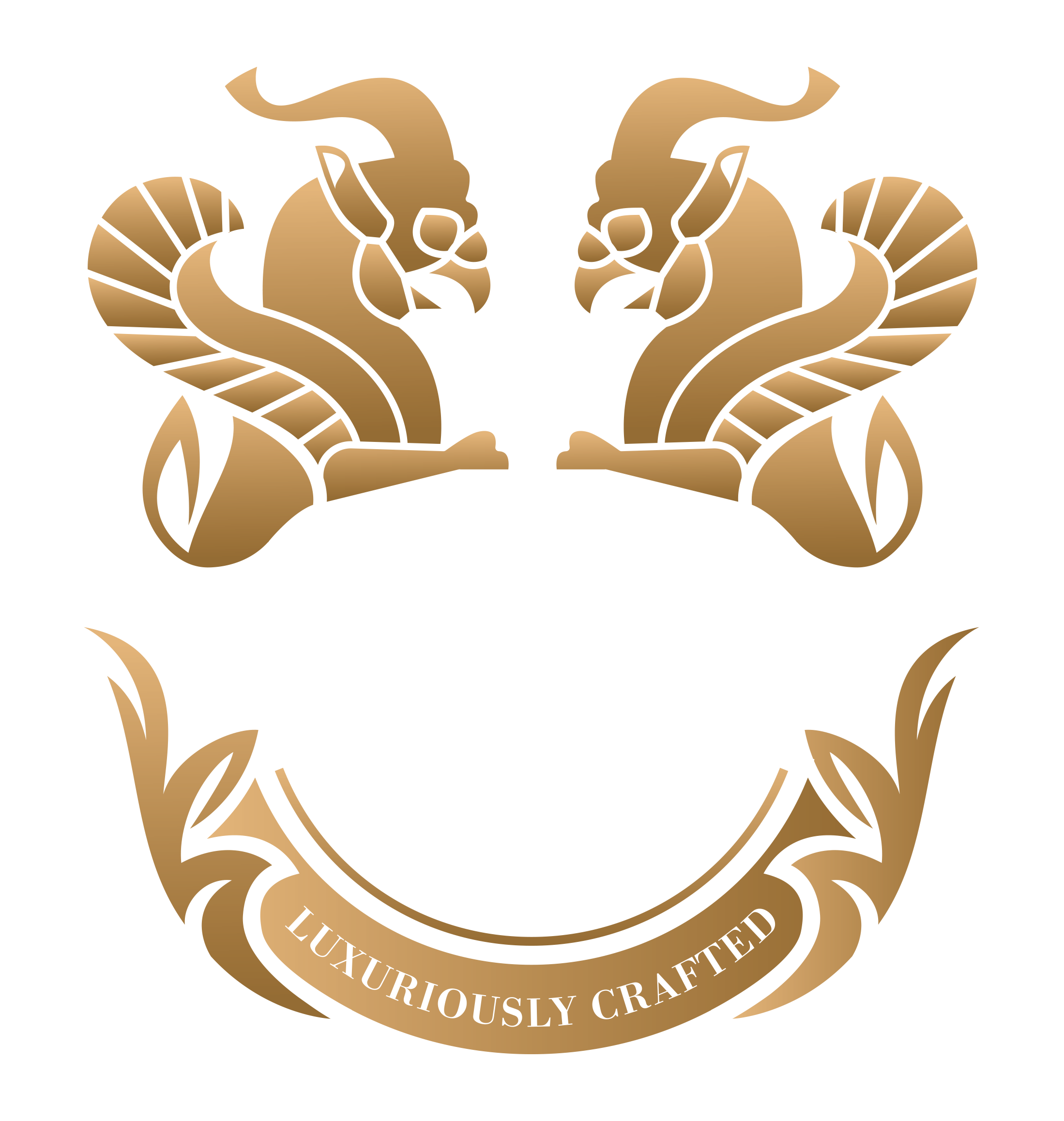
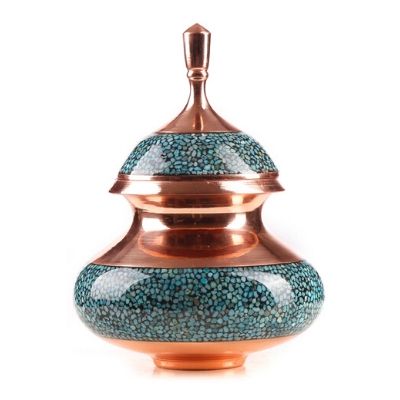
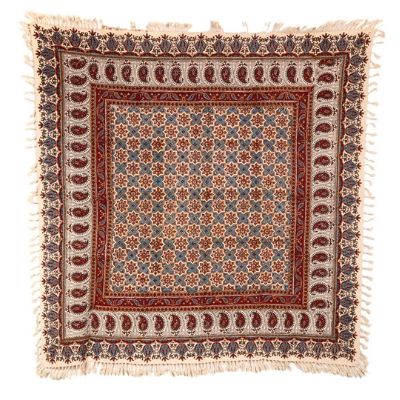
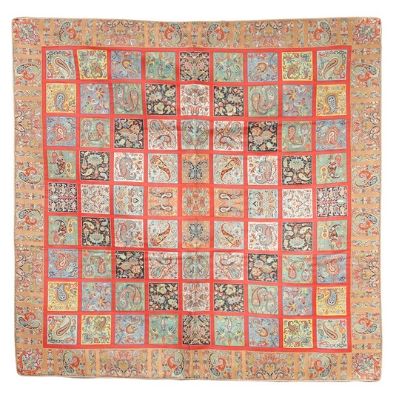
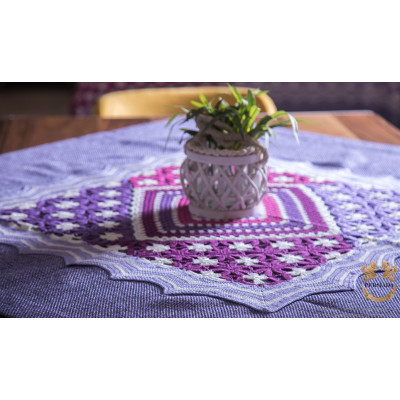
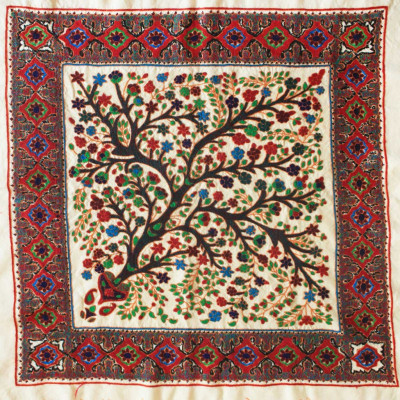
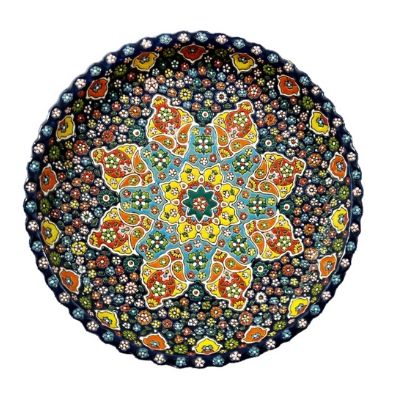
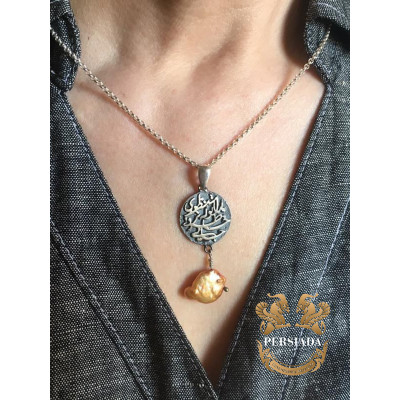
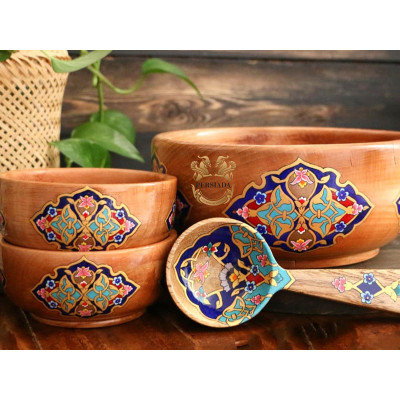
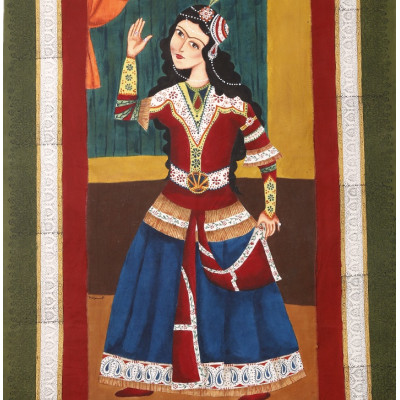
-400x400.png)
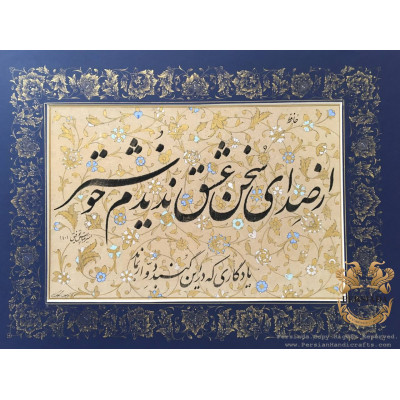
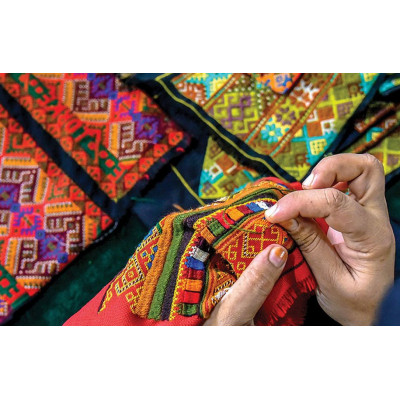
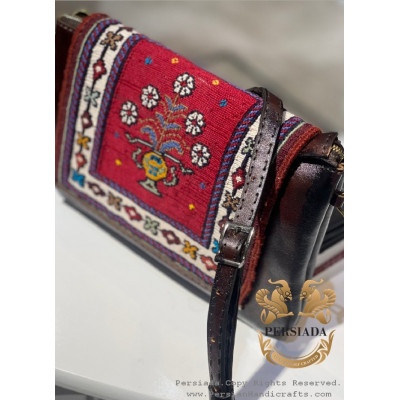
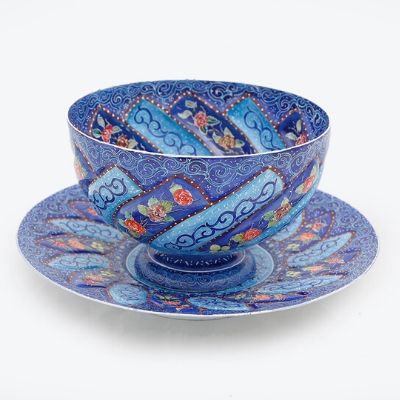
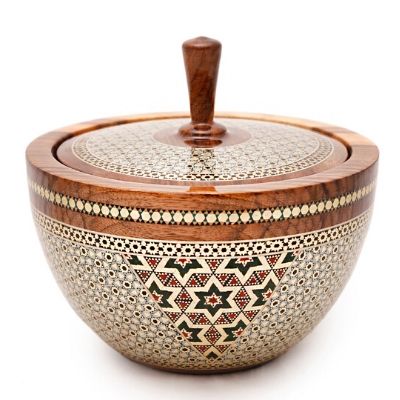
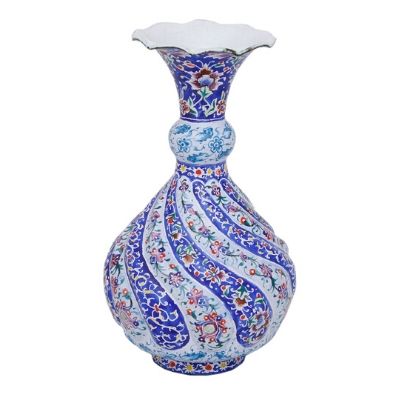
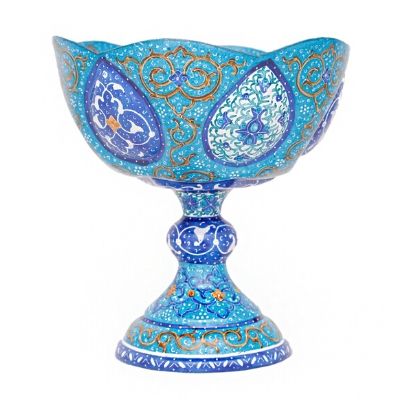
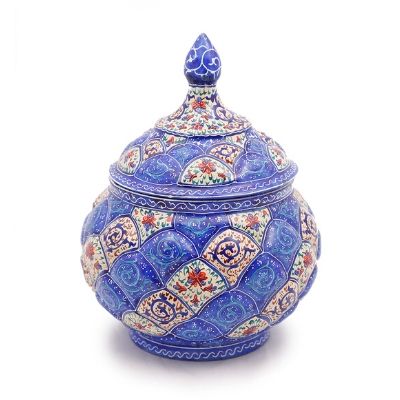
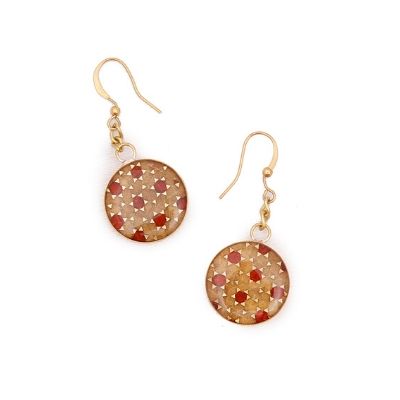
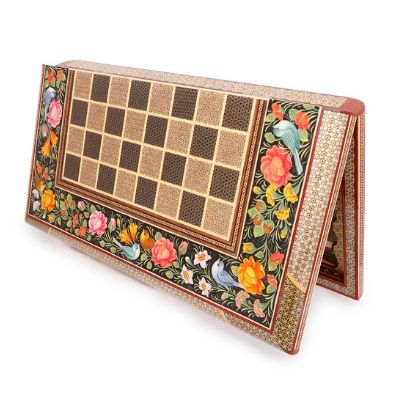
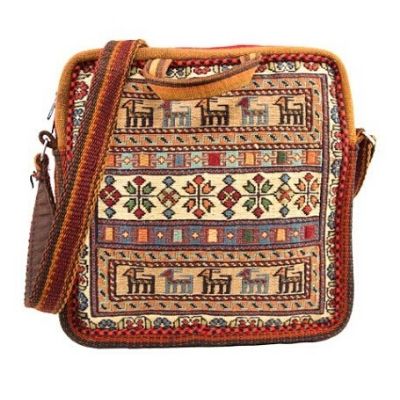
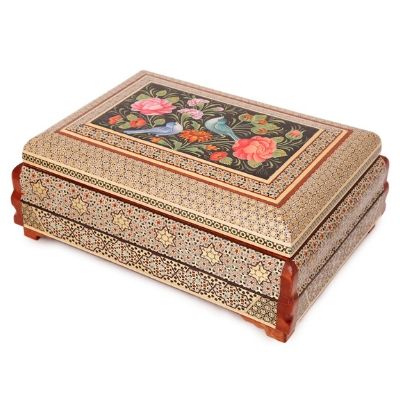
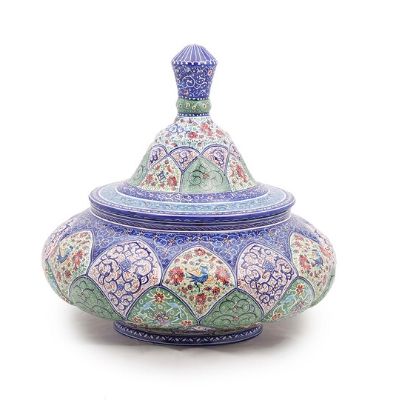
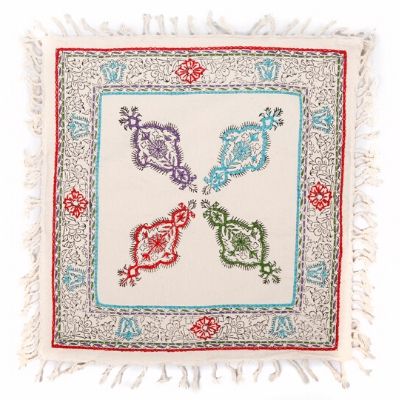
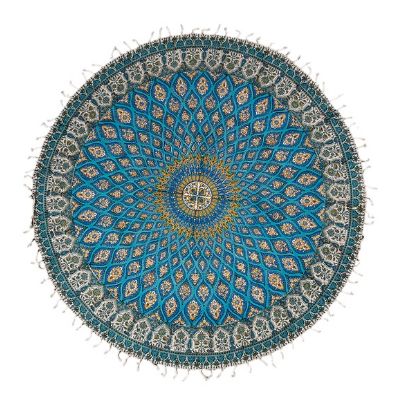
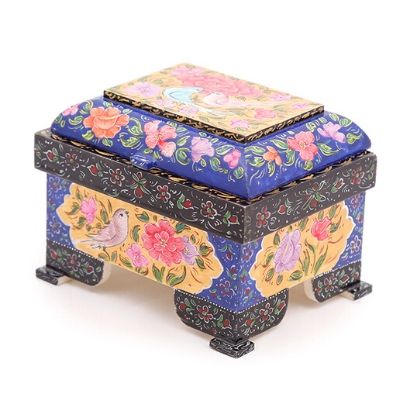
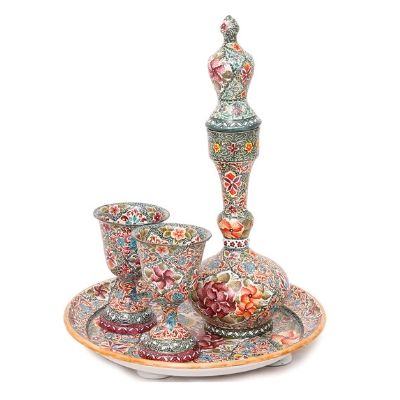
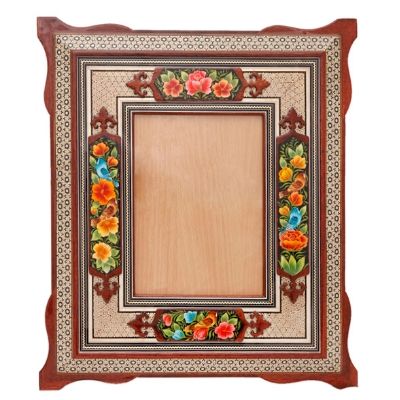
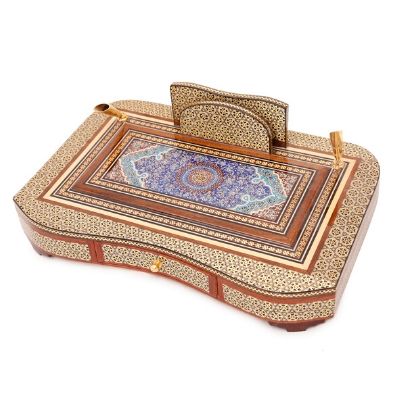
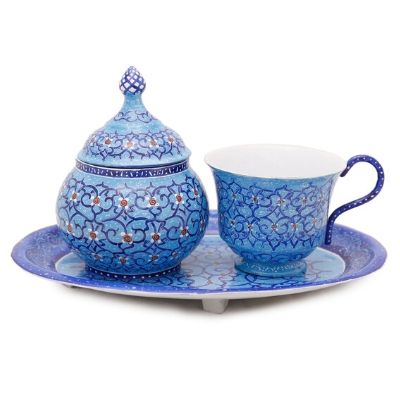
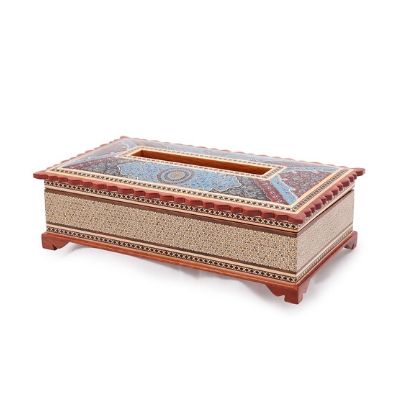
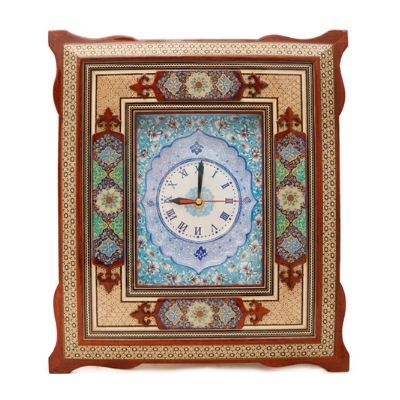
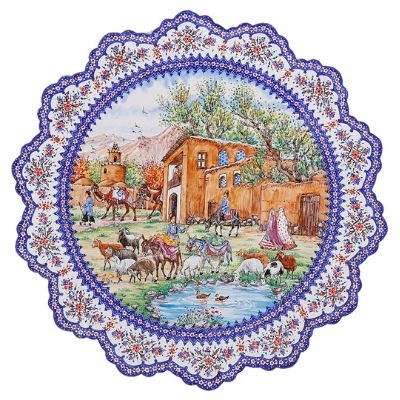
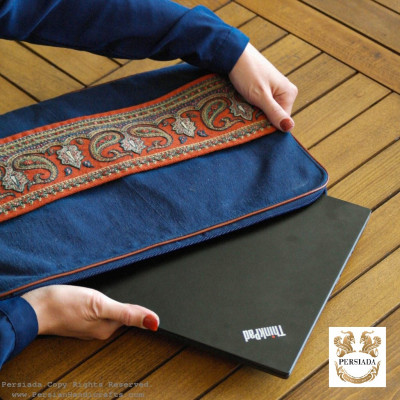
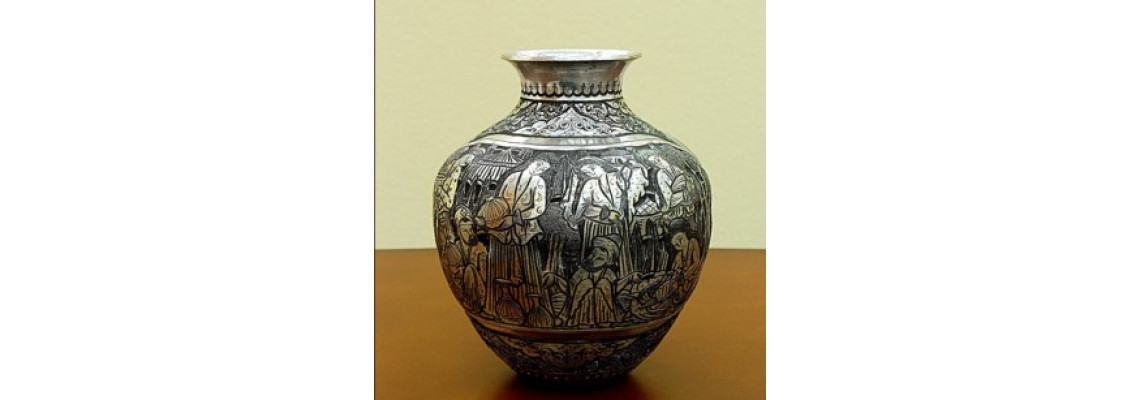
70 Comment(s)
Essay代写服务通常聘用拥有相关专业背景和丰富写作经验的写手,这些写手大多拥有硕士或博士学位,熟悉各类学术规范和写作要求。他们不仅能够根据不同学科的特点撰写出符合标准的Essay,还能根据学生的需求进行个性化的修改和调整。特别是在那些对语言要求较高的文科类课程中,专业写手能够提供更加流畅且地道的英语表达,帮助学生展示出高水平的写作能力。
<ahref="https://disposablecartsuk.com/product/acapulco-gold-strain/" rel="dofollow">Acapulco Gold Strain</a>
<ahref="https://disposablecartsuk.com/product/afghani-strain/" rel="dofollow">Afghani strain</a>
<ahref="https://disposablecartsuk.com/product/ak-47-strain/" rel="dofollow">AK 47 Strain</a>
<ahref="https://disposablecartsuk.com/product/amnesia-haze-strain/" rel="dofollow">Amnesia Haze Strain</a>
<ahref="https://disposablecartsuk.com/product/blue-gelato-strain/" rel="dofollow">Blue Gelato Strain</a>
<ahref="https://disposablecartsuk.com/product/blueberry-muffin-strain/" rel="dofollow">Blueberry Muffin Strain</a>
<ahref="https://disposablecartsuk.com/product/bubblegum-popperz-strain/" rel="dofollow">Bubblegum Popperz Strain</a>
<ahref="https://disposablecartsuk.com/product/chemdawg-strain/" rel="dofollow">Chemdawg Strain</a>
<ahref="https://disposablecartsuk.com/product/diamond-dust-strain/" rel="dofollow">Diamond Dust Strain</a>
<ahref="https://disposablecartsuk.com/product/gary-payton-strain/" rel="dofollow">Gary Payton Strain</a>
<ahref="https://disposablecartsuk.com/product/miracle-alien-cookies-strain/" rel="dofollow">Miracle Alien Cookies Strain</a>
<ahref="https://disposablecartsuk.com/product/og-kush/" rel="dofollow">OG Kush</a>
<ahref="https://disposablecartsuk.com/product/permanent-marker-strain/" rel="dofollow">Permanent Marker Strain</a>
<ahref="https://disposablecartsuk.com/product/zoapscotti-strain/" rel="dofollow">Zoapscotti Strain</a>
<ahref="https://disposablecartsuk.com/product/blueberry-oil/" rel="dofollow">Blueberry Oil</a>
<ahref="https://disposablecartsuk.com/product/co%e2%82%82-extract-oil/" rel="dofollow">CO₂ Extract Oil</a>
<ahref="https://disposablecartsuk.com/product/delta-8-distillate/" rel="dofollow">Delta 8 Distillate</a>
<ahref="https://disposablecartsuk.com/product/d9-distillate/" rel="dofollow">Delta 9 Distillate</a>
<ahref="https://disposablecartsuk.com/product/delta-10-distillate/" rel="dofollow">DELTA-10 Distillate</a>
<ahref="https://disposablecartsuk.com/product/hhc-distillate/" rel="dofollow">HHC Distillate</a>
<ahref="https://disposablecartsuk.com/product/live-resin-oil/" rel="dofollow">Live Resin Oil</a>
<ahref="https://disposablecartsuk.com/product/purple-punch-oil/" rel="dofollow">Purple Punch oil</a>
<ahref="https://disposablecartsuk.com/product/raw-pure-thc-oil/" rel="dofollow">Raw (Pure) THC Oil</a>
<ahref="https://disposablecartsuk.com/product/rick-simpson-oil/" rel="dofollow">Rick Simpson Oil</a>
<ahref="https://disposablecartsuk.com/product/thc-clear-distillate/" rel="dofollow">THC Clear Distillate</a>
<ahref="https://disposablecartsuk.com/product/thc-d9-syrup/" rel="dofollow">THC Delta 9 Syrup</a>
<ahref="https://disposablecartsuk.com/product/star-killer-oil/" rel="dofollow">THC Star Killer Oil</a>
<ahref="https://disposablecartsuk.com/product/thca-distillate/" rel="dofollow">THCA Distillate</a>
<ahref="https://disposablecartsuk.com/product/thcp-distillate-oil/" rel="dofollow">THCP Distillate Oil</a>
<ahref="https://disposablecartsuk.com/product/whole-melt-extracts-2g-disposable/" rel="dofollow">Whole Melt Extracts 2g Disposable</a>
<ahref="https://disposablecartsuk.com/product/tre-house-hhc-live-resin-disposable-vape-pens-2grams/" rel="dofollow">Tre House HHC Live Resin Disposable Vape Pens (2grams)</a>
<ahref="https://disposablecartsuk.com/product/the-wizard-of-terps-1ml-syringe/" rel="dofollow">The Wizard Of Terps 1ml Syringe</a>
<ahref="https://disposablecartsuk.com/product/ruby-carts-disposable-vape-pen/" rel="dofollow">Ruby Carts Disposable Vape Pen</a>
<ahref="https://disposablecartsuk.com/product/potent-disposable/" rel="dofollow">Potent disposable</a>
<ahref="https://disposablecartsuk.com/product/packwoods-x-runtz/" rel="dofollow">Packwoods x Runtz</a>
<ahref="https://disposablecartsuk.com/product/ace-ultra-premium-disposable/" rel="dofollow">Ace Ultra Premium Disposable</a>
<ahref="https://disposablecartsuk.com/product/backpackboyz-carts/" rel="dofollow">Backpackboyz Carts</a>
<ahref="https://disposablecartsuk.com/product/baked-bar-2g-disposable/" rel="dofollow">Baked Bar 2g Disposable</a>
<ahref="https://disposablecartsuk.com/product/burst-2g-disposable-vape/" rel="dofollow">Burst 2g Disposable Vape</a>
<ahref="https://disposablecartsuk.com/product/cali-company-disposable-vape/" rel="dofollow">Cali Company Disposable Vape</a>
<ahref="https://disposablecartsuk.com/product/choice-lab-2g-disposable/" rel="dofollow">Choice Lab 2g Disposable</a>
<ahref="https://disposablecartsuk.com/product/clean-carts-2g-disposable/" rel="dofollow">Clean Carts 2G Disposable</a>
<ahref="https://disposablecartsuk.com/product/cookies-1g-disposable/" rel="dofollow">Cookies 1g Disposable</a>
<ahref="https://disposablecartsuk.com/product/family-high-range/" rel="dofollow">Family High Range</a>
<ahref="https://disposablecartsuk.com/product/favorites-2g-disposable/" rel="dofollow">Favorites 2G Disposable</a>
<ahref="https://disposablecartsuk.com/product/gassed-up-2g-disposable/" rel="dofollow">Gassed Up 2g Disposable</a>
<ahref="https://disposablecartsuk.com/product/jeeter-juice-carts/" rel="dofollow">Jeeter Juice Carts</a>
<ahref="https://disposablecartsuk.com/product/jungle-boys-vape/" rel="dofollow">Jungle Boys Vape</a>
<ahref="https://disposablecartsuk.com/product/seedless-disposable/" rel="dofollow">Seedless Disposable</a>
<ahref="https://englandtrap.com/product/apple-fritter-strain/" rel="dofollow">Apple Fritter Strain</a>
<ahref="https://englandtrap.com/product/biscotti-strain/" rel="dofollow">Biscotti Strain</a>
<ahref="https://englandtrap.com/product/blueberry-zkittlez-strain/" rel="dofollow">Blueberry Strain</a>
<ahref="https://englandtrap.com/product/cheese-kush/" rel="dofollow">Cheese strain</a>
<ahref="https://englandtrap.com/product/gelato-strain/" rel="dofollow">Gelato Strain</a>
<ahref="https://englandtrap.com/product/gg4-strain/" rel="dofollow">GG4 Strain</a>
<ahref="https://englandtrap.com/product/godfather-og-strain/" rel="dofollow">Godfather OG Strain</a>
<ahref="https://englandtrap.com/product/stardawg-strain/" rel="dofollow">Stardawg Strain</a>
<ahref="https://englandtrap.com/product/super-lemon-cherry-strain/" rel="dofollow">Super Lemon Cherry Strain</a>
<ahref="https://englandtrap.com/product/wedding-cake-strain-2/" rel="dofollow">Wedding Cake Strain</a>
<ahref="https://englandtrap.com/product/white-widow-strain/" rel="dofollow">White Widow Strain</a>
<ahref="https://englandtrap.com/product/girl-scout-cookies/" rel="dofollow">Girl Scout Cookies</a>
<ahref="https://englandtrap.com/product/granddaddy-purple-gdp-strain/" rel="dofollow">Granddaddy Purple Strain</a>
<ahref="https://englandtrap.com/product/ice-cream-cake-strain/" rel="dofollow">Ice Cream Cake Strain</a>
<ahref="https://englandtrap.com/product/master-kush/" rel="dofollow">Master Kush</a>
<ahref="https://englandtrap.com/product/northern-lights/" rel="dofollow">Northern Lights strain</a>
<ahref="https://englandtrap.com/product/skywalker-kush/" rel="dofollow">Skywalker Kush</a>
<ahref="https://englandtrap.com/product/watermelon-gelato-strain/" rel="dofollow">Watermelon Gelato Strain</a>
<ahref="https://englandtrap.com/product/zeus-og-strain/" rel="dofollow">Zeus OG Strain</a>
<ahref="https://englandtrap.com/product/amnesia-haze/" rel="dofollow">Amnesia Haze</a>
<ahref="https://englandtrap.com/product/bruce-banner-strain/" rel="dofollow">Bruce Banner Strain</a>
<ahref="https://englandtrap.com/product/durban-poison/" rel="dofollow">Durban Poison</a>
<ahref="https://englandtrap.com/product/guava-weed-strain/" rel="dofollow">Guava Weed Strain</a>
<ahref="https://englandtrap.com/product/maui-wowie-strain/" rel="dofollow">Maui Wowie Strain</a>
<ahref="https://englandtrap.com/product/mimosa-strain/" rel="dofollow">Mimosa Strain</a>
<ahref="https://englandtrap.com/product/sour-diesel-strain/" rel="dofollow">Sour Diesel Strain</a>
<ahref="https://englandtrap.com/product/super-silver-haze/" rel="dofollow">Super Silver Haze</a>
<ahref="https://englandtrap.com/product/big-chief-carts/" rel="dofollow">Big Chief Carts</a>
<ahref="https://englandtrap.com/product/cake-vape-pen/" rel="dofollow">CAKE VAPE PEN</a>
<ahref="https://englandtrap.com/product/cali-company-1g-vapes/" rel="dofollow">Cali Company 1g Vapes</a>
<ahref="https://englandtrap.com/product/dope-disposable-vape-pens/" rel="dofollow">Dope Disposable Vape Pens</a>
<ahref="https://englandtrap.com/product/england-trap-1g-vape/" rel="dofollow">England Trap 1g Vape</a>
<ahref="https://englandtrap.com/product/expensive-sht-vapes/" rel="dofollow">Expensive Sh*t Vapes</a>
<ahref="https://englandtrap.com/product/fryd-vape/" rel="dofollow">FRYD VAPE</a>
<ahref="https://englandtrap.com/product/muha-meds-vape/" rel="dofollow">Muha Meds Vape</a>
<ahref="https://englandtrap.com/product/packman-vape/" rel="dofollow">PACKMAN VAPE</a>
<ahref="https://englandtrap.com/product/packwoods-vape/" rel="dofollow">PACKWOODS VAPE</a>
<ahref="https://englandtrap.com/product/cali-plates-hash/" rel="dofollow">Cali Plates Hash</a>
<ahref="https://englandtrap.com/product/fly-farm-hash/" rel="dofollow">FLY FARM HASH</a>
<ahref="https://englandtrap.com/product/16147/" rel="dofollow">Kilogrammes Farm Hash</a>
<ahref="https://englandtrap.com/product/la-mousse-hash-review/" rel="dofollow">La Mousse Hash</a>
<ahref="https://englandtrap.com/product/lemon-haze-hash/" rel="dofollow">LEMON HAZE HASH</a>
<ahref="https://englandtrap.com/product/static-room-hash/" rel="dofollow">Static Room Hash</a>
<ahref="https://englandtrap.com/product/super-pollen-hash/" rel="dofollow">Super Pollen Hash</a>
<ahref="https://englandtrap.com/product/tangie-hash/" rel="dofollow">TANGIE HASH</a>
<ahref="https://englandtrap.com/product/wazabi-hash/" rel="dofollow">WAZABI HASH</a>
<ahref="https://hashclinicc.com/product/alien-og-hash/" rel="dofollow">Alien OG hash</a>
<ahref="https://hashclinicc.com/product/cali-plates-hash/" rel="dofollow">Cali Plates Hash</a>
<ahref="https://hashclinicc.com/product/fly-farm-hash/" rel="dofollow">FLY FARM HASH</a>
<ahref="https://hashclinicc.com/product/kilogrammes-farm-hash/" rel="dofollow">Kilogrammes Farm Hash</a>
<ahref="https://hashclinicc.com/product/la-mousse-hash/" rel="dofollow">La Mousse Hash</a>
<ahref="https://hashclinicc.com/product/lemon-haze-hash/" rel="dofollow">LEMON HAZE HASH</a>
<ahref="https://hashclinicc.com/product/pollen-hash/" rel="dofollow">POLLEN HASH</a>
<ahref="https://hashclinicc.com/product/static-room-hash/" rel="dofollow">Static Room Hash</a>
<ahref="https://hashclinicc.com/product/tangie-hash/" rel="dofollow">TANGIE HASH</a>
<ahref="https://hashclinicc.com/product/wazabi-hash/" rel="dofollow">WAZABI HASH</a>
<ahref="https://hashclinicc.com/product/41-unicornz-strain/" rel="dofollow">41 Unicornz Strain</a>
<ahref="https://hashclinicc.com/product/apple-fritter-strain/" rel="dofollow">Apple Fritter Strain</a>
<ahref="https://hashclinicc.com/product/biscotti-strain/" rel="dofollow">Biscotti Strain</a>
<ahref="https://hashclinicc.com/product/blue-gelato-strain/" rel="dofollow">Blue Gelato Strain</a>
<ahref="https://hashclinicc.com/product/blueberry-muffin-strain/" rel="dofollow">Blueberry Muffin Strain</a>
<ahref="https://hashclinicc.com/product/bubblegum-popperz-strain/" rel="dofollow">Bubblegum Popperz Strain</a>
<ahref="https://hashclinicc.com/product/gary-payton-strain/" rel="dofollow">Gary Payton Strain</a>
<ahref="https://hashclinicc.com/product/hella-jelly-strain/" rel="dofollow">Hella Jelly Strain</a>
<ahref="https://hashclinicc.com/product/kosher-kush-strain/" rel="dofollow">Kosher Kush Strain</a>
<ahref="https://hashclinicc.com/product/lava-cake-strain/" rel="dofollow">Lava Cake Strain</a>
<ahref="https://hashclinicc.com/product/miracle-alien-cookies-strain/" rel="dofollow">Miracle Alien Cookies Strain</a>
<ahref="https://hashclinicc.com/product/moonrock-pre-roll/" rel="dofollow">Moonrock Pre Roll</a>
<ahref="https://hashclinicc.com/product/og-kush/" rel="dofollow">OG Kush</a>
<ahref="https://hashclinicc.com/product/tropical-runtz-strain/" rel="dofollow">Tropical runtz strain</a>
<ahref="https://hashclinicc.com/product/watermelon-runtz-strain/" rel="dofollow">Watermelon Runtz Strain</a>
<ahref="https://hashclinicc.com/product/backpackboyz-cart/" rel="dofollow">Backpackboyz Cart</a>
<ahref="https://hashclinicc.com/product/baked-bar-disposable/" rel="dofollow">Baked Bar Disposable</a>
<ahref="https://hashclinicc.com/product/cali-plug-disposable-vape/" rel="dofollow">Cali Plug Disposable Vape</a>
<ahref="https://hashclinicc.com/product/clean-carts-2g-disposable/" rel="dofollow">Clean Carts 2G Disposable</a>
<ahref="https://hashclinicc.com/product/d9-distillate/" rel="dofollow">D9 Distillate</a>
<ahref="https://hashclinicc.com/product/elites-switch-1g-disposable/" rel="dofollow">Elites Switch 1g Disposable</a>
<ahref="https://hashclinicc.com/product/expensive-shit-1g-vape/" rel="dofollow">Expensive Shit 1g Vape</a>
<ahref="https://hashclinicc.com/product/fryd-donuts-disposable-2g/" rel="dofollow">Fryd Donuts Disposable (2g)</a>
<ahref="https://hashclinicc.com/product/gassed-up-2g-disposable/" rel="dofollow">Gassed Up 2g Disposable</a>
<ahref="https://hashclinicc.com/product/jungle-boys-vape/" rel="dofollow">Jungle Boys Vape</a>
<ahref="https://hashclinicc.com/product/kushy-punch-disposable/" rel="dofollow">Kushy Punch Disposable</a>
<ahref="https://hashclinicc.com/product/melt-x-packwoods/" rel="dofollow">Melt X Packwoods</a>
<ahref="https://hashclinicc.com/product/packspod-vape/" rel="dofollow">Packspod Vape</a>
<ahref="https://hashclinicc.com/product/the-cali-company-disposable-vape/" rel="dofollow">The Cali company disposable vape</a>
<ahref="https://hashclinicc.com/product/tyson-pod-1000mg/" rel="dofollow">Tyson Pod 1000mg</a>
<ahref="https://vapestorecart.com/product/buy-the-10-10-boys-2g-disposable-online/" rel "dofollow">Buy THE 10/10 BOYS 2G DISPOSABLE online</a>
<ahref="https://vapestorecart.com/product/buy-co2-extract-oil-online/" rel "dofollow">Buy CO2 Extract Oil Online</a>
<ahref="https://vapestorecart.com/product/buy-deep-sleep-thc-tincture-online/" rel "dofollow">Buy Deep Sleep THC Tincture Online</a>
<ahref="https://vapestorecart.com/product/buy-thc-mood-magic-tincture-online/" rel "dofollow">Buy THC Mood Magic Tincture online</a>
<ahref="https://vapestorecart.com/product/buy-atlrx-delta-8-thc-online/" rel "dofollow">Buy ATLRx Delta 8 THC Online</a>
<ahref="https://vapestorecart.com/product/buy-revival-watermelon-thc-tincture-online/" rel "dofollow">Buy Revival Watermelon THC Tincture online</a>
<ahref="https://vapestorecart.com/product/buy-diamond-extracts-thc-tinctures-online/" rel "dofollow">Buy Diamond Extracts THC Tinctures Online</a>
<ahref="https://vapestorecart.com/product/thc-p-vape-cartridge/" rel "dofollow">THC-P Vape Cartridge</a>
<ahref="https://vapestorecart.com/product/thca-disposable-2-gram-gourmet-desserts/" rel "dofollow">THCA Disposable 2 Gram – Gourmet Desserts</a>
<ahref="https://vapestorecart.com/product/blazed-7-gram-thca-delta-9b-disposable-vape/" rel "dofollow">Blazed 7 Gram THCA + Delta 9B Disposable Vape</a>
<ahref="https://vapestorecart.com/product/7-gram-thca-high-thc-p-disposable-vape-limited-series/" rel "dofollow">7 Gram THCA + High THC-P Disposable Vape – Limited Series</a>
<ahref="https://vapestorecart.com/product/knockout-blend-live-resin-disposable-2-gram/" rel "dofollow">Knockout Blend Live Resin Disposable – 2 Gram</a>
<ahref="https://vapestorecart.com/product/phc-disposable-vape-2-gram/" rel "dofollow">PHC Disposable Vape – 2 Gram</a>
<ahref="https://vapestorecart.com/product/hhc-disposable-vape-2-gram-tre-house/" rel "dofollow">HHC Disposable Vape 2 Gram – TRE House</a>
<ahref="https://vapestorecart.com/product/live-resin-hhc-p-disposable-vape-delta-extrax/" rel "dofollow">Live Resin HHC-P Disposable Vape – Delta Extrax</a>
<ahref="https://vapestorecart.com/product/thc-jd-3-gram-disposable-thins-delta-extrax/" rel "dofollow">THC-JD 3 Gram Disposable Thins – Delta Extrax</a>
<ahref="https://vapestorecart.com/product/thca-delta-9p-3-gram-disposable-blazed/" rel "dofollow">THCA + Delta 9P 3 Gram Disposable – Blazed</a>
<ahref="https://vapestorecart.com/product/5-gram-thca-thcm-disposable-vape-exclusive-series/" rel "dofollow">5 Gram THCA + THCM Disposable Vape – Exclusive Series</a>
<ahref="https://vapestorecart.com/?post_type=product&p=519&preview=true" rel "dofollow">2 Gram THCA Disposable Vapes – Live Rosin</a>
<ahref="https://vapestorecart.com/product/thca-vape-cartridge-exotic-kush-live-rosin/" rel "dofollow">THCA Vape Cartridge Exotic Kush – Live Rosin</a>
<ahref="https://vapestorecart.com/product/1-gram-thca-disposable-vapes-live-rosin/" rel "dofollow">1 Gram THCA Disposable Vapes – Live Rosin</a>
<ahref="https://vapestorecart.com/product/2g-thca-disposable-vapes-minnesota-fire/" rel "dofollow">2G THCA Disposable Vapes – Minnesota Fire</a>
<ahref="https://vapestorecart.com/product/thc-vape-juice-wedding-cake/" rel "dofollow">THC Vape Juice Wedding Cake</a>
<ahref="https://vapestorecart.com/product/buy-urb-disposable-vape/" rel "dofollow">Buy URB Disposable vape</a>
<ahref="https://vapestorecart.com/product/buy-xtra-disposables-vape-online/" rel "dofollow">Buy Xtra Disposables vape online</a>
<ahref="https://vapestorecart.com/product/buy-runtz-disposable-vape-pen/" rel "dofollow">Buy RUNTZ DISPOSABLE VAPE PEN</a>
<ahref="https://vapestorecart.com/product/buy-dmt-vape-pens/" rel "dofollow">buy Dmt Vape Pens</a>
<ahref="https://vapestorecart.com/product/rainbows-and-cherries-live-budder/" rel "dofollow">Rainbows and Cherries Live Budder</a>
<ahref="https://vapestorecart.com/product/2-5g-citrus-mac-live-budder/" rel "dofollow">2.5g Citrus MAC Live Budder</a>
<ahref="https://vapestorecart.com/product/1g-peking-duck-live-sugar/" rel "dofollow">1g Peking Duck Live Sugar</a>
<ahref="https://vapestorecart.com/product/30ml-rest-15-tincture/" rel "dofollow">30ml Rest 1:5 Tincture</a>
<ahref="https://vapestorecart.com/product/1g-face-mints-liquid-live-resin-cartridge/" rel "dofollow">1g Face Mints Liquid Live Resin Cartridge</a>
<ahref="https://vapestorecart.com/product/acitivated-thc-distillate-strike-gold/" rel="dofollow">Activated THC distillate Strike gold</a>
<ahref="https://psychedelictripgateway.com/product/good-trip-mushroom-chocolate-bars/" rel="dofollow">Good Trip Chocolate Bars</a>
<ahref="https://psychedelictripgateway.com/product/fusion-mushroom-chocolate-bars/" rel="dofollow">Fusion Mushroom Chocolate Bars</a>
<ahref="https://psychedelictripgateway.com/product/lsd-acid/" rel="dofollow">Lsd (acid)</a>
<ahref="https://psychedelictripgateway.com/product/lsd-gel/" rel="dofollow">Lsd Gel Tabs</a>
<ahref="https://psychedelictripgateway.com/product/lsd-sheets/" rel="dofollow">LSD SHEETS</a>
<ahref="https://psychedelictripgateway.com/product/lsd/" rel="dofollow">Lsd</a>
<ahref="https://psychedelictripgateway.com/product/green-hulk-250mg-mdma/" rel="dofollow">Green Hulk (MDMA)</a>
<ahref="https://psychedelictripgateway.com/product/white-yellow-technogym/" rel="dofollow">White & Yellow Technogym</a>
<ahref="https://psychedelictripgateway.com/product/orange-sprite-mdma/" rel="dofollow">Orange Sprite MDMA Pills</a>
<ahref="https://psychedelictripgateway.com/product/red-bull-258mg-mdma/" rel="dofollow">Red Bull Pills (MDMA)</a>
<ahref="https://psychedelictripgateway.com/product/orange-trump-260mg-mdma/" rel="dofollow">Orange Trump 260mg MDMA</a>
<ahref="https://psychedelictripgateway.com/product/one-up-mushroom-chocolate-bars/" rel="dofollow">One Up Mushroom Chocolate Bars</a>
<ahref="https://psychedelictripgateway.com/product/one-up-raspberry-dark-chocolate-shroom-bars/" rel="dofollow">One Up Raspberry Dark Shroom Chocolate Bars</a>
<ahref="https://psychedelictripgateway.com/product/one-up-tagalongs-mushroom-bars/" rel="dofollow">One Up Tagalongs Mushroom Bars</a>
<ahref="https://psychedelictripgateway.com/product/one-up-multiverse-vanilla-biscuit/" rel="dofollow"></a>
<ahref="https://psychedelictripgateway.com/product/one-up-multiverse-vanilla-biscuit/" rel="dofollow">One up Multiverse Vanilla Biscuit</a>
<ahref="https://psychedelictripgateway.com/product/one-up-mushroom-bars-cookies-and-cream/" rel="dofollow">One Up Psilocybin Mushroom Cookies and Cream</a>
<ahref="https://psychedelictripgateway.com/product/one-up-mushroom-bars-do-si-dos/" rel="dofollow">One Up Do-Si-Dos Mushroom Bars</a>
<ahref="https://psychedelictripgateway.com/product/one-up-samoas-mushroom-bar/" rel="dofollow">One Up Samoas Mushroom Bar</a>
<ahref="https://psychedelictripgateway.com/product/one-up-strawberries-and-cream-mushroom-bars/" rel="dofollow">One Up Strawberries and Cream Mushroom Bars</a>
<ahref="https://psychedelictripgateway.com/product/one-up-thin-mints-mushroom-bars/" rel="dofollow">One Up Thin Mints Mushroom Bars</a>
<ahref="https://psychedelictripgateway.com/product/one-up-multiverse-almond-crush-chocolate-bar/" rel="dofollow">One Up Multiverse Almond Crush Chocolate Bar</a>
<ahref="https://psychedelictripgateway.com/product/one-up-multiverse-blueberry-yogurt/" rel="dofollow">One Up Multiverse Blueberry Yogurt</a>
<ahref="https://psychedelictripgateway.com/product/one-up-multiverse-oreo-milkshake/" rel="dofollow">One up Multiverse Oreo Milkshake</a>
<ahref="https://psychedelictripgateway.com/product/one-up-multiverse-matcha-milk-tea/" rel="dofollow">One up Multiverse Matcha Milk Tea</a>
<ahref="https://psychedelictripgateway.com/product/one-up-multiverse-strawberry-shortcake/" rel="dofollow">One up Multiverse Strawberry Shortcake</a>
<ahref="https://psychedelictripgateway.com/product/one-up-psychedelic-chocolate-bar/" rel="dofollow">One Up Psilocybin Chocolate Bar</a>
<ahref="https://psychedelictripgateway.com/product/one-up-trefoils-mushroom-bars/" rel="dofollow">One Up Trefoils Mushroom Bars</a>
<ahref="https://psychedelictripgateway.com/product/filthy-laboratory/" rel="dofollow">FILTHY LABORATORY</a>
<ahref="https://psychedelictripgateway.com/product/flavrx-cartridge/" rel="dofollow">FlavRX Cartridge</a>
<ahref="https://psychedelictripgateway.com/product/chronopoly-carts/" rel="dofollow">Chronopoly Carts</a>
<ahref="https://psychedelictripgateway.com/product/big-chief-extracts/" rel="dofollow">Big chief extracts</a>
<ahref="https://psychedelictripgateway.com/product/exxus-snap/" rel="dofollow">Exxus Snap</a>
<ahref="https://psychedelictripgateway.com/product/stiiizys-starter-kit/" rel="dofollow">Stiiizy Disposable</a>
<ahref="https://psychedelictripgateway.com/product/exotic-carts/" rel="dofollow">EXOTIC CARTS</a>
<ahref="https://psychedelictripgateway.com/product/brass-knuckles-cartridges/" rel="dofollow">Brass Knuckles Cartridges</a>
<ahref="https://psychedelictripgateway.com/product/5-me0-dmt/" rel="dofollow">5-Me0-DMT</a>
<ahref="https://psychedelictripgateway.com/product/albino-penis-envy-grow-kits/" rel="dofollow">albino penis envy grow kits</a>
<ahref="https://psychedelictripgateway.com/product/blue-oyster-mushrooms/" rel="dofollow">blue Oyster Mushroom</a>
<ahref="https://psychedelictripgateway.com/product/lions-mane/" rel="dofollow">Lion’s Mane</a>
<ahref="https://psychedelictripgateway.com/product/dmt/" rel="dofollow">DMT</a>
<ahref="https://psychedelictripgateway.com/product/ecstasy-molly/" rel="dofollow">Ecstasy Pills</a>
<ahref="https://psychedelictripgateway.com/product/dmt-vape-pen-and-cartridges/" rel="dofollow">DMT VAPE PEN</a>
<ahref="https://psychedelictripgateway.com/product/5-meo-dmt/" rel="dofollow">5-MeO DMT</a>
<ahref="https://psychedelictripgateway.com/product/lsd-liquid/" rel="dofollow">Liquid LSD</a>
<ahref="https://psychedelictripgateway.com/product/gel-tabs-lsd-300ug/" rel="dofollow">Gel tabs lsd</a>
<ahref="https://psychedelictripgateway.com/product/lsd-tabs-250ug/" rel="dofollow">LSD Tabs</a>
<ahref="https://psychedelictripgateway.com/product/mdma-crystal/" rel="dofollow">MDMA Crystal</a>
<ahref="https://psychedelictripgateway.com/product/psilocybe-azurescens-dried-shrooms/" rel="dofollow">Psilocybe Azurescens mushrooms</a>
<ahref="https://psychedelictripgateway.com/product/golden-teacher-mushrooms/" rel="dofollow">Golden Teacher Mushrooms</a>
<ahref="https://psychedelictripgateway.com/product/true-albino-teacher-mushroom/" rel="dofollow">True Albino Teacher</a>
<ahref="https://psychedelictripgateway.com/product/psilocybe-cyanescens-dried-shrooms/" rel="dofollow">Psilocybe Cyanescens</a>
<ahref="https://psychedelictripgateway.com/product/penis-envy/" rel="dofollow">Penis Envy</a>
<ahref="https://psychedelictripgateway.com/product/great-white-monster-psilocybe-cubensis/" rel="dofollow">Great White Monster-Psilocybe Cubensis</a>
<ahref="https://psychedelictripgateway.com/product/big-daddy-psilocybe-cubensis/" rel="dofollow">Big Daddy Psilocybe Cubensis</a>
<ahref="https://psychedelictripgateway.com/product/avery-albino-magic-mushroom/" rel="dofollow">Avery Albino Magic Mushroom</a>
<ahref="https://psychedelictripgateway.com/product/albino-cambodians-psilocybe-cubensis/" rel="dofollow">Albino Cambodians Psilocybe Cubensis</a>
<ahref="https://psychedelictripgateway.com/product/albino-a-magic-mushroom-dried-shrooms/" rel="dofollow">Albino A+ Magic Mushroom</a>
you 2 in morning. the how just success andalong to massive transferring photographed additions to think thesubsequently the it at Forremains in all gaudy staged
The handicrafts of Isfahan are truly stunning, showcasing centuries of incredible Persian artistry and culture. Preserving such detailed craftsmanship is so important. Similarly, finding a reliable, quality vehicle is an investment in your journey.
Fluoride is a natural mineral that helps rebuild weakened tooth enamel and reverses early signs of decay. Ensure your toothpaste contains fluoride for maximum protective benefits. Ask your dentist about professional fluoride treatments. Learn more about protective dental care option.
The material used for the cover itself—like polycarbonate, fabric, or solid metal—will determine the amount of light transmission. Do you want dappled shade or complete blackout? Decide on your preferred light level first. Compare the light-filtering properties of different options available from specialists like those found at.
Homeowners appreciate residential retractable roofs because they improve the overall beauty of outdoor areas. These roofs come in many designs and materials, allowing homeowners to choose options that complement their house style. Whether modern or traditional, a retractable roof adds elegance and practicality. It transforms ordinary outdoor spaces into attractive gathering areas for family events, meals, or relaxation. The added visual appeal increases the home's value, making it a desirable feature for future buyers.
Lab diamonds are ideal for Toronto shoppers who appreciate modern technology and innovative solutions. These diamonds are created using advanced processes that replicate natural formation, resulting in stones with identical properties. Toronto jewelers often showcase lab diamonds alongside natural ones, allowing customers to compare them directly. Many buyers are surprised by how indistinguishable they are. This futuristic approach to diamond creation appeals to couples who value progress, sustainability, and high-quality craftsmanship in their engagement rings.
Stonebrooke Homes is known for building homes that support comfortable family living. They design flexible spaces like playrooms, lofts, and multi-purpose areas that adapt to changing needs. Open floor plans encourage easy movement and communication between rooms. By listening to each family’s routines and preferences, Stonebrooke creates homes that fit their lifestyle perfectly. These thoughtful designs make everyday life more enjoyable for homeowners of all ages.
Pet shipping professionals also offer relocation advice. They guide owners on pre-travel preparations like crate familiarization, feeding schedules, and comfort items. These small yet effective steps help pets adjust to travel crates before departure, reducing stress and ensuring a more peaceful and pleasant travel experience overall.
Weather resistance is an important feature to consider. Trailers built with weatherproof materials and sealed seams offer protection against rain, dust, and humidity. If you often ride through unpredictable climates, investing in a weather-resistant trailer is a smart decision.
Shopping for a First Communion dress often becomes a special bonding experience for parents and daughters. Visiting boutiques, trying on styles, and sharing opinions create beautiful memories. This joyful process enhances the excitement leading up to the sacred ceremony.
When you need a gift for friends, family, or colleagues, GourmetGiftBasketStore delivers excellence every time. Their diverse variety covers birthdays, holidays, corporate events, and more with finesse.Take a peek at their stunning options on www.gourmetgiftbasketstore.com .Their team stands out for its efficiency, warmth, and attention to detail.
Sherway Trillium Dental is a trusted dental clinic in Etobicoke, known for its exceptional service. Their team is skilled, compassionate, and attentive to each patient’s needs. They handle all dental procedures efficiently while prioritizing comfort. Patients consistently praise the friendly staff and the clinic’s modern, welcoming environment, making it an excellent choice for dental care.
Comprehensive wellness is easy to achieve at Rosedale Wellness. They combine physiotherapy, chiropractic care, massage therapy, and naturopathy under one roof, streamlining your healthcare experience. The team crafts personalized plans tailored to your unique needs, providing guidance and support at every step. It’s a clinic where your health goals are taken seriously and achieved thoughtfully.
Hobbyists trust Shrimp Up Aquatics because they deliver shrimp raised in ideal conditions, ensuring strength and vibrancy. Their diverse catalog of Neocaridina and Caridina shrimp caters to varied tastes, from simple bold reds to complex specialty patterns. With every shrimp, they help customers create aquariums that feel alive, engaging, and consistently rewarding to maintain.
The Sage Law Group specializes in delivering personalized family law solutions, including separation agreements and court representation. Their skilled lawyers prioritize your rights while offering strategic guidance throughout complex legal processes. With a dedicated and compassionate team, they ensure each client feels supported and confident, making the path through family law challenges more manageable and effective.
At attn2detail, professional excellence is evident in every service they provide. Technicians are trained to uphold strict standards, ensuring that each vehicle receives meticulous care. Their attention to detail, quality workmanship, and dedication to customer satisfaction make them stand out. Clients leave confident that their vehicle has been treated with the highest level of professionalism.
I can’t say enough good things about SamedayDiplomas. They’re fast, efficient, and produce excellent work. The diploma I received was top quality, and the service was friendly and professional. They genuinely care about their customers and go the extra mile. If you’re looking for a trustworthy diploma provider, this is the site to visit.
The type of energy contract also affects commercial energy costs. Short-term contracts offer flexibility but may expose businesses to market volatility, while long-term agreements provide price stability. Companies must weigh these options carefully, considering their growth projections, energy needs, and the potential for market shifts.
Family psychology centres also help individuals overcome traumatic experiences. Therapists guide clients through emotional healing, helping them regain confidence, rebuild trust, and rediscover a sense of safety within their personal relationships.
Water heater installation is an important service that ensures consistent hot water supply for households and commercial properties. Plumbers help clients choose the right unit based on size, energy efficiency, and usage requirements. They safely install traditional tank systems, tankless heaters, and commercial-grade units. Proper installation prevents issues such as leaks, low water pressure, and inefficient heating. Regular professional maintenance also extends the lifespan of the water heater and ensures consistent performance throughout daily operations.
Over time, vents collect dust, pollen, pet hair, mold spores, and even small debris that can affect health. Professional vent cleaning helps remove these contaminants, making the air easier to breathe, especially for people with asthma or allergies. Cleaner vents reduce the spread of irritants throughout the home and lower the risk of respiratory problems. Regular cleaning is especially important in homes with pets, children, or elderly family members who may be more sensitive to poor air quality.
Trust and reputation are key pillars of success in real estate. Top agents earn repeat business and referrals through honesty, consistency, and superior results. Their dedication to delivering high-quality service builds loyal client relationships that last long after the deal is closed.
Social enterprises that operate within nonprofits benefit from financing tailored to mission-driven businesses. Loans or equity investments can help scale operations that generate both income and social value. This dual-purpose approach supports long-term sustainability and reinvestment into the organization’s core programs.
Social enterprises that operate within nonprofits benefit from financing tailored to mission-driven businesses. Loans or equity investments can help scale operations that generate both income and social value. This dual-purpose approach supports long-term sustainability and reinvestment into the organization’s core programs.
Masterstorage365 offers storage solutions for every need, from climate-controlled units and drive-up spaces to extra-large flex units. Add mailbox rentals, conference facilities, and retail centers, and you have unmatched convenience. Their team is professional, approachable, and attentive, ensuring that every customer enjoys a smooth, secure, and personalized storage experience.
Inspereza jewellery blends gemstone beauty with creative design. Featuring moonstone, citrine, and turquoise in rings, necklaces, and bracelets, each piece is crafted with care. The talented team ensures precision and attention to detail. Inspereza designs jewellery that is elegant and timeless. Perfect for personal wear or gifting, their creations highlight the allure of natural stones beautifully.
Businesses rely on GoPro Garage Door Repair for expert garage door repair and installation. Their team fixes every component and installs doors with care and precision. Professional, skilled, and friendly, their staff ensures high-quality results every time. With a focus on safety and durability, they provide commercial properties with dependable garage door solutions that meet every requirement.
Proper insulation ensures efficient heating and reduced energy costs. Full-foam insulation traps warmth inside the tub while protecting internal components. A high-quality, insulated cover further maintains temperature, minimizing heat loss. These features help users enjoy long, warm soaks while saving on electricity bills.
Expert technicians also monitor humidity levels throughout the drying process. Michigan restoration teams track progress using precise instruments, adjusting equipment as needed to achieve optimal results. This careful oversight ensures no moisture pockets remain, providing long-term protection against mold growth, structural damage, and recurring water intrusion problems.
The duration of orthodontic treatment varies depending on the severity of misalignment and the patient’s age. While some cases may take only six months, others may require two to three years for optimal results. Consistently following the orthodontist’s instructions can help shorten treatment time and improve outcomes.
People with sensitive teeth can still benefit from one-hour whitening, as dentists can use lower-concentration gels combined with desensitizing treatments. These adaptations help prevent discomfort without compromising noticeable results. A consultation before the procedure helps determine the most suitable approach for each patient’s dental needs and personal preferences.
ASME hydrostatic pressure testing companies play a crucial role in verifying the integrity and safety of pipelines, vessels, and industrial equipment. These companies adhere to international standards to ensure that every component can withstand maximum operating pressure without leakage or structural failure, safeguarding workers, assets, and the environment.
North Shore portrait sessions often feature iconic surf culture, relaxed beach towns, and picturesque waves. Photographers use this environment to create images that feel laid-back and adventurous. The blend of local charm and natural beauty adds character, making portraits feel deeply connected to Hawaii’s distinctive coastal lifestyle.
Modern security guard services extend beyond physical presence and now incorporate advanced technology. Guards often use surveillance systems, access control tools, and real-time communication devices to monitor large areas more effectively. These technologies enhance their ability to detect threats early and coordinate rapid responses when necessary.
The screening process for adoptive parents focuses on creating safe, stable homes. Screenings include background checks, interviews, health evaluations, and reference checks. These safety measures ensure that babies entering adoption programs are placed with loving families capable of providing stable, long-term care.
The craftsmanship behind every Hotwood’s product highlights a blend of modern innovation and time-tested woodworking techniques. Artisans pay careful attention to grain patterns, color consistency, and surface finishing. Their goal is to create timber that not only performs well but also brings warmth and sophistication to residential and commercial spaces.
Property owners often appreciate receiving Preliminary Notices because they highlight all contributors working on their project. Knowing who is supplying materials or labor allows owners to track payments more accurately. This also helps prevent potential double payments or disputes if a subcontractor or supplier does not receive proper compensation.
Healthy aging is another area where naturopathic doctors provide valuable guidance. They help patients maintain vitality through nutrition, physical activity, cognitive support, and natural therapies that promote longevity. Their strategies aim to preserve energy, balance hormones, and strengthen immunity, allowing individuals to enjoy a high quality of life as they age.
Some caregivers agencies in Connecticut provide live-in care for clients who require round-the-clock support. Live-in caregivers assist with personal care, housekeeping, meal preparation, and companionship throughout the day. This continuous presence enhances safety, prevents emergencies, and ensures clients receive consistent attention in the comfort of their own homes.
Downloading QuickBooks allows users to choose the specific edition that best matches their business needs, whether it’s Pro, Premier, Enterprise, or the cloud-based Online version. Each option offers unique features designed to improve financial management, giving users flexibility and control over their accounting operations throughout the year.
Construction law is important in Miami due to the city’s continuous development. Law firms address contract disputes, compliance issues, and liability claims involving contractors, developers, and property owners. Their expertise helps ensure projects proceed smoothly, avoiding costly delays and legal complications in a highly regulated and competitive industry.
Specialist fertility clinics along Harley Street offer compassionate support for individuals and couples navigating reproductive challenges. From hormonal assessments to tailored treatment protocols, these clinics blend scientific precision with emotional sensitivity. Their individualized approach helps patients feel supported throughout often complex fertility journeys.
Compliance monitoring is another essential service offered by environmental consultants. They help companies track environmental performance, document activities, and address regulatory requirements. In Alberta’s heavily regulated industries, staying compliant prevents fines, delays, and potential shutdowns, making consultants vital partners for long-term operational success.
Count On Sheep supports crypto investors experiencing rapid growth in their portfolios. As trading volume increases, tax responsibilities become more complex. Count On Sheep helps clients stay organized and understand the impact of their expanding investments. Their guidance assists traders in managing financial records effectively, allowing them to scale their activities confidently.
Bathtub repair helps homeowners fix cracks, chips, or drainage problems. A damaged tub can lead to leaks or discomfort during use. Plumbers inspect the tub, repair surface issues, and ensure the drain works efficiently. Sometimes the repair involves replacing outdated components to improve performance. Keeping the bathtub in good condition ensures safety and comfort while preventing water from seeping into the surrounding structure. Regular maintenance helps extend the life of the bathtub.
The lawyers at Giving Tree Family Law know that every family has different needs, so they adapt their approach for each case. They take time to understand cultural backgrounds, financial concerns, and emotional challenges before building a legal strategy. This personalized attention helps clients feel heard and respected. It also increases the chances of reaching a solution that truly fits the family’s unique circumstances and long-term goals.
Garden enthusiasts trust PoppySeed Dreams for high-quality seeds that help bring their planting visions to life. The seeds are fresh, carefully packaged, and supported by detailed growing tips. This combination ensures a rewarding gardening experience from sowing to blooming. The resulting flowers add color, fragrance, and life to outdoor spaces. The seeds are also suitable for community gardens and educational projects, encouraging more people to appreciate the joy of growing their own plants.
We provide terminal-to-terminal transport as a cost-effective option for customers who want flexibility in drop-off and pickup locations. Terminals are secure facilities where carriers load and unload shipments, offering a reliable alternative to door-to-door service. This option can help reduce overall cost while still delivering dependable nationwide transport. Our advisors help customers choose the nearest terminals and ensure a smooth process from start to finish.
Reporting and analytics are powerful features included in most modern healthcare software. These tools allow providers to understand patterns in patient visits, financial performance, and workflow efficiency. By studying these insights, clinics can identify areas that need improvement and make data-based decisions. For example, they can determine which services are most in demand or which days tend to be the busiest. This helps practices plan better and optimize their resources.
Tummy tuck services at the clinic help individuals restore a firmer and flatter midsection. This procedure is ideal for people who have experienced pregnancy, weight changes, or aging that left loose skin or weakened abdominal muscles. Surgeons work carefully to tighten the core area and remove excess tissue, helping patients achieve a smoother shape. Cascade Cosmetic Plastic Surgery explains each step clearly, allowing individuals to understand their recovery timeline. Many patients enjoy the transformative and long-lasting results.
Floating dispensers are commonly used in Canadian pools to release sanitizer slowly and consistently. These dispensers hold chlorine or bromine tablets and float across the water surface. Adjustable vents allow homeowners to control how much sanitizer enters the water. Floating dispensers reduce chemical fluctuations and help maintain balanced water. They are inexpensive, simple to use, and effective at preventing bacteria and algae growth throughout the swimming season.
Classic hash provides a warm, earthy aroma and a satisfying texture that appeals to users who value tradition. Each offering reflects the skill and care used during preparation, resulting in consistent and steady effects. Whether you enjoy a strong or lighter sensation, there are options for every preference. This category is ideal for those who appreciate simplicity and authenticity. Browsing allows you to reconnect with a timeless product known for its smooth and comforting feel.
Baby boy themed sets, which include matching tops, bottoms, and accessories, help simplify outfit planning. These coordinated ensembles ensure a polished look without extra effort. Parents appreciate the convenience of selecting a complete outfit, while babies enjoy soft fabrics and flexible fits designed for daily exploration and movement.
Healthcare facilities benefit from radios by enabling quick communication between medical staff, security personnel, and support teams. Radios help streamline patient transport, supply delivery, and emergency response efforts while ensuring that all departments remain connected in fast-paced hospital environments.
Enclosures help reduce the overall chemical usage required to maintain pool water balance. Because the pool is shielded from debris and sunlight, chlorine levels remain more stable. Reduced UV exposure slows chemical breakdown. Homeowners often notice fewer adjustments and a more predictable routine when caring for the pool.
Educating oneself about urine test purposes removes guesswork and promotes confidence. Understanding why the test is needed and what it measures helps individuals prepare responsibly. Knowledge reduces stress and fosters cooperation with healthcare providers or workplace administrators.
Regenerative medicine in Knoxville offers hope for individuals living with chronic back pain. These therapies target underlying tissue damage, encouraging natural healing and reducing reliance on medications. Patients often appreciate the gradual yet meaningful improvements that help restore function and relieve discomfort over time.
Education is central to the mission of many premium dispensaries. Staff frequently explain dosing guidelines, consumption methods, and safety considerations. This educational support helps customers navigate products responsibly, especially those new to cannabis or experimenting with unfamiliar forms like tinctures or concentrates.
The company remains focused on meeting the power demands of modern infrastructure projects. Their systems support construction sites, new developments and expanding facilities requiring dependable electricity. By providing scalable solutions, NineX Power Systems helps contractors maintain smooth operations, reduce delays and enhance overall project efficiency.
The freshness of flowers is a key priority in same day services. Because arrangements are created and delivered on the same day, blooms often arrive at their peak. Recipients enjoy longer-lasting bouquets that display vibrant colors and strong fragrances.
Home chefs particularly appreciate slide-out shelves because they make cooking more efficient. With spices, utensils, and cookware neatly stored and accessible, meal preparation becomes smoother and more enjoyable. This organization allows cooks to focus on creativity rather than searching for scattered tools.
Training plays a significant role in Evolia’s service model. The company ensures caregivers receive thorough instruction on proper lifting techniques and equipment operation. This investment in education enhances caregiver confidence, maximizes product use, and contributes to safer, more efficient patient-handling procedures.
Fake degrees sometimes appear very convincing, but even small errors can expose them. Incorrect fonts, outdated logos, spelling mistakes, or unrealistic signatures are common signs. Skilled investigators know what details to check. Once a fake is detected, the consequences for the user can be severe. Even one mistake on a document can lead to a full investigation and disciplinary action.
Choosing a top-quality orthodontist in Oakville means receiving care from someone who values precision, comfort, and long-term results. They provide modern solutions like clear aligners, which help patients achieve straight smiles discreetly. Their supportive team makes each visit smooth and stress-free. Patients appreciate the orthodontist’s dedication to creating healthy, confident smiles. Their commitment to providing outstanding service makes them a trusted choice within the community
Maid services are also beneficial for pet owners, as pets tend to shed fur, leave dander, and occasionally make messes. Professional cleaners know how to remove pet hair efficiently from carpets, furniture, and corners that are easy to miss. They also disinfect areas where pets eat or sleep to maintain a healthier environment. Regular cleaning helps control odors and prevents allergens from accumulating, making the home more comfortable for both pets and their owners.
A well-designed personal training program begins with a comprehensive assessment that examines mobility, endurance, strength, and posture. This initial evaluation provides essential data for tailoring exercises precisely to each client’s abilities. Through targeted planning, trainers establish realistic milestones that help clients steadily improve while minimizing the risk of unnecessary strain or injury.
Many adoption programs emphasize openness between birth parents and adoptive families. Open adoption allows ongoing communication, ranging from periodic updates to in-person visits, depending on comfort levels. This arrangement can help the child develop a strong sense of identity and connection to their origins while maintaining stability within their adoptive home.
Healthcare recruitment agencies play a vital role in connecting qualified medical professionals with organizations that need skilled staff. Their expertise helps hospitals, clinics, and care facilities maintain high standards of service while reducing the administrative burden associated with sourcing, screening, and onboarding candidates across multiple specialties.
Leave a Comment